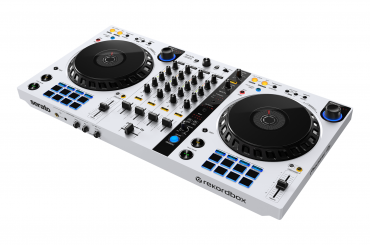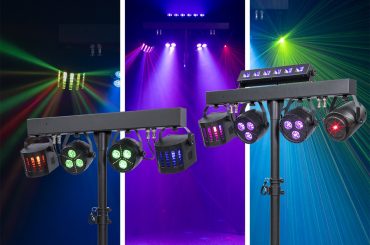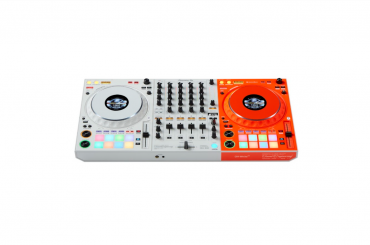At the recent DJ Expo in Atlantic City, I participated in a DJ-tech panel discussion with DJ Times editor Jim Tremayne, and three prominent music retailers.
During the panel, I expressed some surprise that after nearly a decade of writing for this magazine, we still have all the same fundamental DJ technology approaches that we had back then, and they’re all still in use: We have dedicated digital DJ controllers. We have CDJs (or “media players” if you prefer) for spinning CDs, DVDs, and so on — though many of them have morphed into decks that actually lack disc media slots. We have vinyl turntables with features uniquely targeted to the DJ market. And both the CDJs and vinyl turntables are still frequently being used for DVS or “scratch-style” digital DJing with specially coded media.
Quite frankly, in 2008, I would have imagined that we’d all be using dedicated controllers by now, and that’d be that. I couldn’t have been more wrong. Indeed, here I am, in 2017, taking Numark’s brand-new NTX1000 vinyl-DJ turntable for a spin.
Numark Industries is part of the Cumberland, R.I.-based inMusic family, which includes in the DJ space not just Numark, but Denon DJ and Rane as well. These brands cover the full spectrum of DJ-control options, and the company continues to show both innovation and dedication to the DJ market that’s hard to surpass.
So, what does a turntable new-to-market in 2017 look like and feel like? Let’s find out.
First Impressions, Set-Up & Use: In the interest of full disclosure, part of the reason I wanted to look at the Numark NTX1000 is because I’m not a turntablist, and my review is based primarily on the use of the turntable for DVS control; it represents the one area of DJ control that I’ve not had the pleasure of exploring for these pages, and I wanted to check out what I might be missing. For my own gigs, I move between multiple dedicated controllers, and multiple classic mixer-and-twin-deck combos with CDJs or slot-less media players — the latter sometimes playing digital media directly, sometimes using DVS/scratch control, and sometimes a hybrid of both. I like being able to walk up to just about anything with my media (in whatever context that might be), and get to work. But vinyl turntables? Well, these bad boys are something I’ve not tinkered with much since I was a kid.
Having recently received a Serato DVS-focused mixer from another manufacturer (the subject of a separate review), the NTX1000’s arrival couldn’t have been better timed; I unboxed the turntable and began setting it up for use with the mixer.
The NTX1000 doesn’t come with a cartridge; I borrowed one from a USB-equipped DJ turntable I received as a gift a few years back (and which I never used for DJing – it found only limited use converting some rare, old vinyl records to digital). Numark assumes — rightly — that selecting a cartridge is the stuff of religion among DJs, and, naturally, the company offers a number of choices themselves that may be of interest.
With my borrowed cartridge in place, I balanced the tonearm per Numark’s included directions — a simple process that seemed familiar enough from back in the day when vinyl ruled the roost. I next unboxed the mixer and its included Serato vinyl media, connected the NTX1000, and set about getting familiar with using a real vinyl turntable for transport control in Serato DJ.
For a start, I immediately understood why there’s a whole subset of the DJ community who prefers this approach; using a turntable, a real one, has a distinct feel that simply is not duplicated by any CDJ, media player, or digital controller I’ve ever used. It became obvious to me why so many DJs remain dedicated to the medium.
Much about the NTX1000, quite frankly, seems familiar to me — given that CDJs were designed to emulate the capabilities of DJ turntables in many regards. It’s also really not entirely different from turntables of decades past; the ubiquitous spindle adapter for 45s is present and accounted for, and you get strobed illumination that, with marks on the platter, is used to ensure that the pitch is precisely centered and the platter’s spinning at either 33-1/3 or 45 RPM. As I mentioned, tonearm set-up is really quite traditional as well.
For the DJ market, however, you get the expected extras, including the ability to quickly start or stop the rotation of the platter, a pitch fader, adjustable pitch ranging (up to plus/minus 50-percent), and adjustment knobs to control the rate at which the platter comes up to speed — or comes to a stop — letting you fine-tune the behavior to your liking. None of these features may be groundbreaking (more on that later), but all are important to the working DJ. Equally important to a working DJ is the beefy vibration damping system that helps eliminate skipping from thumping subwoofers and so forth.
The damping system, in particular, was quite effective. In my home-studio, DJ-test-bed environment, I intentionally drove the low-end very, very hard, and the NTX1000 quite literally never skipped a beat. It was actually a bit difficult to get it to skip even when I was deliberately trying to make it happen by doing a hip thrust onto my work desk; I definitely give Numark high marks on that front, and I wish I’d had that kind of isolation back in the day.
It’s worth noting that the NTX1000 provides standard stereo RCA outputs, at either line or phono level (switchable), as well as offering a USB port that allows the unit to behave as a plug-and-play USB audio device for digitally capturing the audio with ease.
While I don’t have audio vinyl to spin in a DJ context, I did throw some aging vinyl on the NTX1000 just to see how it performed. While much of the outcome lies perhaps the choice of cartridge I happened to use, I have to say I continue to be amazed at how good vinyl sounds — even old stuff played on poorer-grade gear back in the day — in an age where many people have accepted over-compressed MP3s reproduced through cheap earbuds as the new normal. The various technical specifications for the NTX1000 claimed by Numark suggest stable, accurate, and noise-free playback for those spinning audio vinyl (or people like me who are just taking a walk down the musical memory lane).
After giving the NTX1000 a thorough workout, about the only issue I could find is that the tonearm clip — used to fix the tonearm in place when not in use — is not as tight and “affirmative” as it seems it probably should be. But that’s a pretty small criticism for what is clearly a nicely made, high-performance turntable for the DJ market.
Using DVS control with Serato on the NTX1000 was a pleasant experience, albeit one quite different than I’m used to, especially as my entry into DJing was via early digital controllers. I was able to spin a pretty basic DJ set without any difficulty, but it’s clear that choosing vinyl turntables for transport control in Serato would take some more time and practice to be truly skilled at executing.
Finally, despite my predictions from a decade ago, there are actually a very large number of DJ turntables on the market, so the NTX1000 enters a somewhat crowded space. Comparing its features to some of those others suggests that Numark isn’t really trying to blaze any new trails with the NTX1000 in terms of its capabilities — but maybe it doesn’t have to.
Conclusions: The Numark NTX1000 is an affordable new entry in the vibrant DJ-turntable market, providing a straightforward set of functions, and robust construction, in an affordable package — roughly $400 street price. While not blazing any new trails feature-wise, it offers great performance all around, making it an attractive choice for both audio use, as well as DVS/scratch control, for DJs who prefer using vinyl in their workflows. I may not be one of them today, but perhaps a little more time with the NTX1000, you never know.








